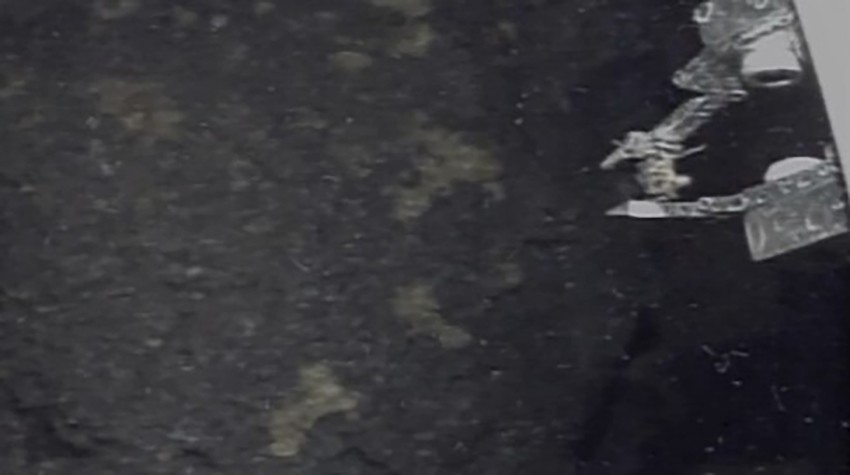A robot that has spent months inside the ruins of a nuclear reactor at the tsunami-hit Fukushima Daiichi plant delivered a tiny sample of melted nuclear fuel on Thursday, in what plant officials said was a step toward beginning the cleanup of hundreds of tons of melted fuel debris.
The sample, the size of a grain of rice, was placed into a secure container, marking the end of the mission, according to Tokyo Electric Power Company Holdings, which manages the plant. It is being transported to a glove box for size and weight measurements before being sent to outside laboratories for detailed analyses over the coming months.
Plant chief Akira Ono has said it will provide key data to plan a decommissioning strategy, develop necessary technology and robots and learn how the accident had developed.
The first sample alone is not enough and additional small-scale sampling missions will be necessary in order to obtain more data, TEPCO spokesperson Kenichi Takahara told reporters Thursday. “It may take time, but we will steadily tackle decommissioning,” Takahara said.
Despite multiple probes in the years since the 2011 disaster that wrecked the. plant and forced thousands of nearby residents to leave their homes, much about the site's highly radioactive interior remains a mystery.
The sample, the first to be retrieved from inside a reactor, was significantly less radioactive than expected. Officials had been concerned that it might be too radioactive to be safely tested even with heavy protective gear, and set an upper limit for removal out of the reactor. The sample came in well under the limit.
That's led some to question whether the robot extracted the nuclear fuel it was looking for from an area in which previous probes have detected much higher levels of radioactive contamination, but TEPCO officials insist they believe the sample is melted fuel.
The extendable robot, nicknamed Telesco, first began its mission August with a plan for a two-week round trip, after previous missions had been delayed since 2021. But progress was suspended twice due to mishaps — the first involving an assembly error that took nearly three weeks to fix, and the second a camera failure.
On Oct. 30, it clipped a sample weighting less than 3 grams (.01 ounces) from the surface of a mound of melted fuel debris sitting on the bottom of the primary containment vessel of the Unit 2 reactor, TEPCO said.
Three days later, the robot returned to an enclosed container, as workers in full hazmat gear slowly pulled it out.
On Thursday, the gravel, whose radioactivity earlier this week recorded far below the upper limit set for its environmental and health safety, was placed into a safe container for removal out of the compartment.
The sample return marks the first time the melted fuel is retrieved out of the containment vessel.
Fukushima Daiichi lost its key cooling systems during a 2011 earthquake and tsunami, causing meltdowns in its three reactors. An estimated 880 tons of fatally radioactive melted fuel remains in them.
The government and TEPCO have set a 30-to-40-year target to finish the cleanup by 2051, which experts say is overly optimistic and should be updated. Some say it would take for a century or longer.
Chief Cabinet Secretary Yoshimasa Hayashi said there have been some delays but “there will be no impact on the entire decommissioning process.”
No specific plans for the full removal of the fuel debris or its final disposal have been decided.
© Copyright 2024 The Associated Press. All rights reserved. This material may not be published, broadcast, rewritten or redistributed without permission. Get your ticket to GaijinPot Expo 2024
Get your ticket to GaijinPot Expo 2024















8 Comments
Login to comment
sakurasuki
One grain per day!
Albert
@sakurasuki
You seem not to understand how difficult and dangerous this work is.
sakurasuki
@Albert
It's shows how difficult the task, so prevention it's more preferable than reactive,
Fukushima power plant is not the only one power plant that face the ocean.
Other power plant it's still running or plan to start.
ushosh123
According to google, there is 1.358*10^10 grains of rice in 880 tonnes... So it's been 13 years, and 1 grain was collected.... So.... That's quite some way to go with the clean up
WiseOneIn Kansai
@sakura
As negative as usual daily.
TEPCO is making an effort. This is all new technology and techniques to be used.
What's your comment about all the plants on the coast of China?
Enlighten us all!!
dbsaiya
Nuke power is cheap until it ain't. It is estimated that over the span of 30 - 40 years the total cost would be 190 billion USD. Funded by taxes and TEPCO, which incidentally passes the cost onto consumers through their utility bills. Don't believe those figures though, we all know what happened with the Tokyo Olympics and the gigantic cost overrun. TEPCO 's executives' compensation is also not published on their web site. So much for all the transparency the LDP and TEPCO were talking about.
Chiao Chiao
Well done!!!!!!!
kurisupisu
The tragedy of the meltdown at Fukushima is that the problems of contamination and radioactive destruction will be born not by this generation but by the next and the next and the next after that…